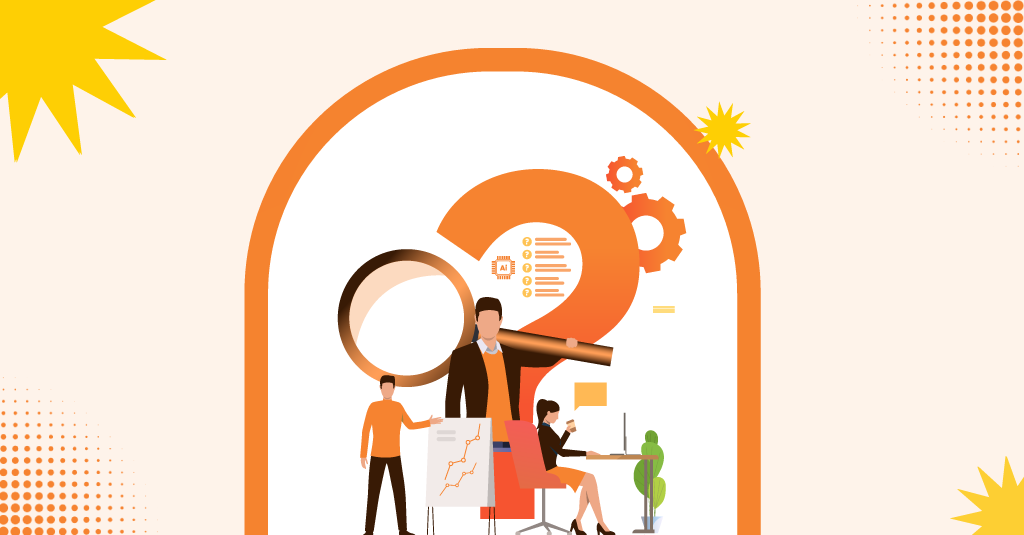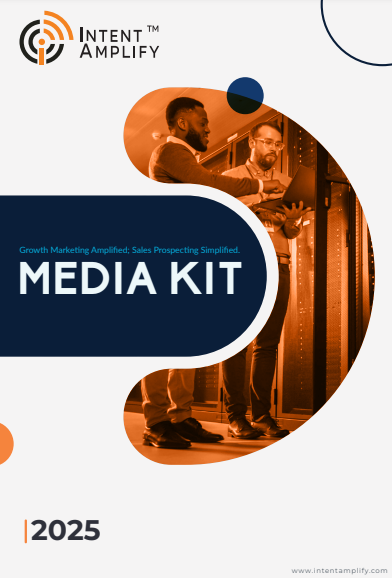
5 Ways AI Transforms the B2B Buyer Journey From Discovery to Decision
- Last updated on: June 30, 2025
In 2025, 80% of B2B sales interactions are expected to occur through digital channels—a fundamental shift from traditional face‑to‑face or phone-first engagement. Buyers are increasingly self‑directed: 52% now prefer a self‑service approach when gathering information at the start of their journey.
At the same time, 89% of B2B buyers are already leveraging generative AI tools during their purchase process, yet only 19% of B2B organizations have fully moved AI into production.. This signals a massive opportunity gap.
AI isn’t just improving efficiency—it’s enabling personalized, intent-driven journeys:
- Real-time signal capture: Buyers explore solutions across 10+ digital channels
- Strategic intent activation: AI tools like intent-data platforms and chatbots detect context and prioritize outreach.
- Experience at scale: AI serves up hyper‑personalized content paths and recommendations at enterprise-grade precision.
B2B sellers aren’t being replaced by AI; they’re empowered by it. When AI orchestrates digital-first touchpoints, reps can focus on high‑leverage, strategic relationships.
Why does AI play such a crucial role in the B2B buying process?
Because today’s buyers are information-overloaded yet relevance-starved. Classic sales and marketing moves usually come too soon, too late, or with irrelevant messaging. AI fixes this by delivering timely, personalized interactions at each touchpoint, enabling sellers to engage buyers where they are and with what they require. Below we explore five imperative ways to see how AI in B2B buyer journey is enhancing visibility, accuracy, and decision-making throughout the B2B funnel are discussed in this article.
Why AI Is Becoming the Backbone of the B2B Buyer Experience?
The typical B2B buying process today entails between six to ten decision-makers and weeks or even months. In this complexity, AI has stepped forward as the glue that binds together disjointed touchpoints and integrates them into a single experience. It dissolves decision fatigue by structuring data as actionable insights, and it applies precision to personalization and sends the right message to the right stakeholder at the right time.
AI’s capacity to connect with CRM systems, marketing automation platforms, and sales intelligence systems generates an integrated perspective of the buyer journey. This integration is vital for account-based tactics and enterprise transactions where timing, messaging, and influence mapping are top of mind. When AI interprets the signals buyers leave behind, businesses can design experiences that are less about marketing and more about personalized guidance.
In short, AI enables every B2B buyer journey to be treated like a VIP without increasing headcount. And in the high-stakes, low-patience environment of today, that kind of responsiveness isn’t only beneficial—it’s necessary.
1. Hyper-Personalized Discovery Through AI-Powered Intent Data
A traditional demand generation used to depend on mass targeting and rule-based segmentation. Today, though, AI engines consume behavioral signals from search, content interaction, and even CRM systems to bring forward high-intent leads. AI platforms are helping B2B marketers move beyond job titles and firmographics; they consume live buying signals.
These solutions group such behaviors as topic exploration, anonymous site visits, and technographic changes to determine accounts actively exploring solutions. This assists in sales and marketing, prioritizing outreach for buyers already indicating a willingness to engage. The result? Increased conversion and decreased time spent pursuing unqualified leads.
2. Intelligent Content Recommendations That Speed Up Awareness
Recommendation engines powered by AI are transforming content experiences for B2B purchasers. Rather than fixed email nurture streams or gate-kept PDFs, smart platforms now provide right-fitting whitepapers, demo videos, and webinars based on the position each purchaser is in the funnel.
LinkedIn and PathFactory employ AI to bring forward the next-best content asset, facilitating self-guided discovery. AI platforms personalize the experience in real-time using dwell time, scroll depth, and past interactions. This accelerates engagement sessions and the rate of moving down the funnel. According to Gartner, businesses utilizing AI personalization reported a 19% boost in buyer pipeline velocity.
In addition, this method eliminates friction by removing unwanted touchpoints. If the content path is tailor-made, it creates trust, long before a human sales representative has any involvement.
3. Predictive Lead Scoring That Captures Actual Buyer Behavior
Legacy lead scoring models tend to be based on arbitrary point scales and outmoded assumptions. AI displaces this guessing with predictive models that align with actual buyer behavior.
Tools such as HubSpot and Adobe Marketo Engage utilize machine learning to evaluate hundreds of variables—everything from email opens and ad clicks to social activity and technographic fit. The outcome is a live score that ranks leads by probability to convert.
These predictive algorithms are retrained continuously as new data feed into the system, lowering bias and raising accuracy. More importantly, predictive scoring fills the gap between marketing-qualified leads (MQLs) and sales-qualified leads (SQLs), allowing handoffs to be smoother and more timely.
4. Conversational AI Driving Mid-Funnel Engagement
Chatbots and AI bots are no longer merely top-of-funnel guards. Now they interact with mid-funnel leads in contextual discussions that are more and more human-like.
Drift, Intercom, and Conversica are using natural language processing (NLP) to provide sales-facilitating conversations – scheduling demos, fielding pricing queries, and even resolving objections. The bots operate 24/7, so no lead ever gets cold because of time zones or the availability of staff.
Consistent with MIT Technology Review, businesses that deployed conversational AI saw a 36% improvement in qualified pipeline creation (source). Beyond convenience, AI chat solutions provide speed and responsiveness—two attributes today’s B2B purchasers expect. And if a live handoff is necessary, the bot preserves all previous context for easy handover.
5. AI-Augmented Decision Support at the Bottom of the Funnel
By the time customers are at the decision stage, AI becomes a strategic guide. AI-powered recommendation engines, competitive comparison tools, and ROI calculators give B2B buyers the analytical acumen they require.
Tools such as Gong and Clari use AI to analyze sales calls, detect objections, and detect buying signals. At the same time, tools such as G2’s buyer intent signals or TrustRadius review data enable procurement teams to compare alternatives on an objective basis.
AI also facilitates account-based analytics, pointing out deal risk factors or stakeholder misalignment before contract signings. Sales leaders can take action in real time using these insights, boosting win rates. By making the final mile of the journey transparent, AI allows buyers to make quicker, fact-based decisions with increased confidence.
The AI Advantage Is Measurable
The B2B buyer experience is no longer a black box. AI introduces transparency, speed, and personalization from discovery to decision. Whether it’s spotting early intent, revealing timely content, or facilitating last-mile decisions, AI empowers marketers and sales teams with data-driven accuracy.
In a world where every second is counted and every interaction is tracked, AI doesn’t simply automate; it accelerates and humanizes the B2B experience. Its adopters aren’t just keeping up, they’re setting the pace.
Ready to Turn AI Signals Into Sales Conversations?
At Intent Amplify™, we help you identify, prioritize, and engage in-market buyers with precision. Leverage real-time intent data, predictive lead scoring, and AI-powered content orchestration to shorten sales cycles and boost revenue. Let’s build your smarter B2B funnel – Book a strategy session now!
FAQs
1. How does AI personalize the B2B buyer journey?
AI leverages behavior data, engagement signals, and context cues to personalize content, communication, and recommendations based on each buyer’s stage in the journey.
2. What are the most useful AI tools for B2B marketing in 2025?
The top tools are 6sense, Demandbase, Drift, Clari, HubSpot, and Gong. Each plays a different touchpoint throughout the journey.
3. What verticals derive the most value from AI for the B2B buying journey?
The tech, cybersecurity, SaaS, and enterprise software industries realize the most ROI, but AI is increasingly popular in all B2B verticals.
4. Is AI displacing human B2B sales reps?
No. AI complements human functions by processing mundane tasks and bringing forth insights, freeing up sales teams to concentrate on strategic, high-touch interaction.
5. How can businesses begin implementing AI in their b2b buyer journey?
Start by mapping bottlenecks in your funnel. Then pilot AI solutions for intent data, content personalization, and lead scoring. Measure results before scaling.




